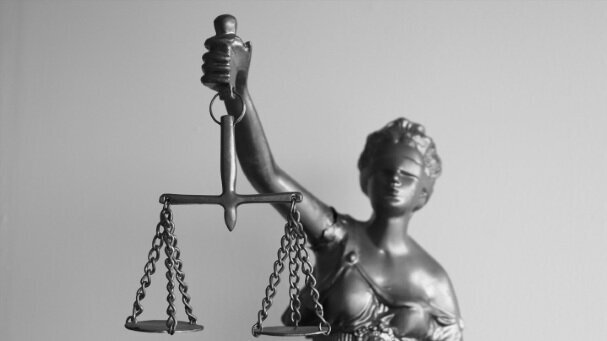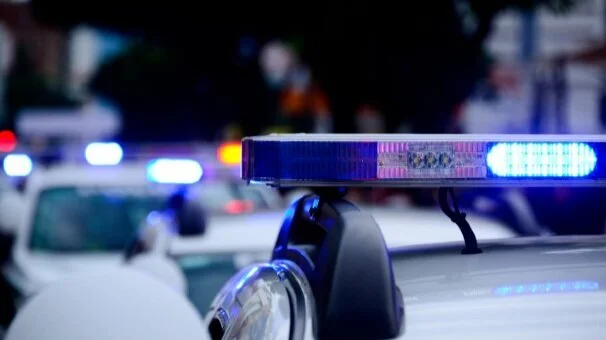Before Defensive Tactics: 5 Training Approaches for LE-Citizen Encounters (Part I)
The tension between law enforcement and the communities they serve and protect is complex. It is driven by legal, social, and economic factors that are not easily within the control of law enforcement.
But what can police officers and organizations do?
The police can influence how they interact with the communities they serve – by ensuring all people are treated in a respectful and dignified way. This can be accomplished while maintaining officer safety and the rule of law.
In this post, we are going to describe a variety of different training methods associated with interactions between police and citizens - procedural justice, implicit-bias, de-escalation, and crisis intervention. They are touted as a solution to police-community tension.
But what are they?
In this two-part series, we are going to describe each, identify what research says, and provide resources. We will also introduce you to our own training approach, active threat assessment.
In Part I, we will focus on procedural justice and implicit bias. In Part II, we focus on de-escalation and crisis intervention training.
More than Just Defensive Tactics
This is NOT a discussion on defensive tactics - where officers should stand, what type of force to use and when, where to hold their hands, restraint techniques, or how to work in teams to ensure officer safety.
We focus on assessment and communication to help an officer better understand a situation and make the most appropriate decisions to resolve it safely and effectively. Defensive tactics may be part of the approach, they are important, but they are not our focus here.
Procedural Justice Training
Research on police legitimacy indicates that citizens are more likely to comply, cooperate with, and obey police they see as legitimate. Legitimacy has four parts:
Participation – involvement in the proceedings prior to a decision.
Neutrality – the authority is impartial and objective in their decisions.
Dignity and respect – the authority showed dignity and respect.
Trustworthy motives – the intent of the authority is seen as honorable.
During a police-citizen encounter, the officer is the authority. Positive dialogue between citizens and police during an encounter promotes citizen satisfaction, confidence, compliance, and cooperation with the police. (Mazzerolle, et al., 2012)
Let’s think about what procedural justice really means. No one likes getting a speeding ticket. But the way we are given the ticket matters to how legitimate we see police. Not just the legitimacy of that officer - but the police in that community and nationwide.
Procedural justice is satisfaction with a police encounter independent of outcome; a driver might not like getting a ticket, but content with their treatment while getting that ticket.
A Bank Account
Experts describe the police-community relationship as a bank account. There are deposits and withdrawals - every positive outcome adds to the balance; negative ones take away from that balance. A positive balance allows the relationship to absorb negative interactions (or withdraws). When the balance is low (or negative), there is a problem.
A Procedural Justice Training
One example of a procedural justice training is from the Chicago Police Department (CPD). There are two CPD procedural justice training courses (PJ1 and PJ2). They cover a range of topics, including:
Goals of policing, principles of procedural justice and legitimacy;
The philosophy of procedural justice and associated research;
The historical context of police and the community;
Body language and communication strategies;
Informing the community about procedural justice; and
Role-playing and practice exercises for implementation.
Procedural justice training can also involve policy, recruitment, and deployment. See this Yale Report on Procedural Justice to learn more.
Research and Resources
A recent evaluation of the CPD procedural justice training involving 8,480 officers. found a 10% reduction in complaints and a 6.4% reduction in the use of force over a 2-year period after training (Wood, Tyler, and Papachristos, 2020). Those are positive findings.
Procedural justice training resources from the COPS Office and the CPD are below:
Implicit Bias Training
Bias in the way law enforcement treats citizens is a bad thing. We want everyone to be treated equally before the law. But what is bias really?
Bias is a human trait based on our need to quickly classify people into categories to make sense of our surroundings and the people in it. We all do it.
It is often automatic and subconscious. As we classify, we stereotype, and we often link our personal experiences to those stereotypes. We all do this too.
This combination of stereotypes, imprints, and past experience can lead to bias. It is a prejudice in favor of or against one thing, person, or group compared with another, usually in a way considered to be unfair. There are three types:
Explicit– prejudice and animus towards specific groups that a person is aware of; this is purposeful.
Implicit – bias that operates outside of conscious awareness, it involves a subconscious influence on how people act towards a particular group.
Counter – when knowing that a potential bias exists, a person does the opposite in a given situation (and may overreact).
Bias in a Police Encounter
Let's think about these three in the example of a police officer and an African American motorist.
Explicit Bias – the police officer stops the African American motorist solely because of their race.
Implicit Bias – a police officer stops the driver for a legal reason, but subconsciously gives more or more severe citations to that African American motorist (through implicit bias).
Counter Bias – a police officer, knowing he may be accused of bias, makes a conscious decision not to stop that African American motorist even when they legally could and perhaps should have.
Does implicit bias occur? Research on the extent that implicit bias impacts police behavior appears to be mixed (Friedell and Lim, 2016; Fridel, 2016). It is also complex. I would suggest digging into it a bit if you want to know more.
Implicit Bias Training Approaches
Implicit bias training includes a variety of different approaches that involve exposure to persons who are a member of the group that a person may be biased against.
Stereotype replacement: replace negative stereotypes with new positive ones.
Counter-stereotypic imaging: take abstract stereotypes and challenge them with real-life contradictions.
Individuation: obtaining information about individual members of that group.
Perspective Taking: take the first-person perspective of members of a group, which leads to empathizing with that group.
Increased Opportunities for Contact: seek out positive opportunities to interact with stigmatized groups.
Ambiguous Threats
Implicit bias training that involves recognizing threats in ambiguous situations that don't reinforce negative stereotypes is also recommended by researchers (Fridell and Lim, 2016).
For example, in some firearms simulators, officers are confronted with shoot or no-shoot scenarios where they must quickly make a decision based on an immediate threat.
Researchers suggest training scenarios where officers encounter subjects behaving in less obviously threatening ways, or in ways that might not be immediately threatening. That way the officer has to make a more gradual assessment based on the situation and behavior of the subject.
Research and Resources
The goal of implicit bias training is to increase fairness in decision-making and make police-citizen encounters more just. At the time of the drafting of this article, there has not been an outcome evaluation assessing the impact of implicit-bias training on police stops, use of force, or complaints. This doesn’t mean it is ineffective, only that we don’t know at this point.
Some resources on bias and implicit bias training are below:
Understanding Bias: A Resource Guide from the U.S. Department of Justice
The U.S. Department of Justice Fair and Impartial Policing Training Program
Before Defensive Tactics Part II
Continue reading about non-defensive tactics in Part II of this series. In Part II, we focus on de-escalation, CIT, and active threat assessment.
-
Addressing the Elephant in the Room. (2018, November 28). Police Chief Magazine. https://www.policechiefmagazine.org/addressing-the-elephant-in-the-room/
Engel, R. S., McManus, H. D., & Herold, T. D. (N.D.). The Deafening Demand for De-escalation Training: A Systematic Review and Call for Evidence in Police Use of Force Reform. 69.
Esquievel, J., Feffeira, A., Hayes, M., Hendson, T., Lipman, B., & Patterson, D. (N.D.). Facilitator Guide—A Tactical Mindset: Procedural Justice and Police Legitimacy (PJ2). Chicago Police Department. https://trustandjustice.org/resources/guide/procedural-justice-and-police-legitimacy-pj1-facilitators-guide
Fierro, R., & Ferreira, A. (N.D.). Facilitator Guide: Procedural Justice and Police Legitimacy (PJ1). Chicago Police Department.
Final Report of the President's Task Force on 21st Century Policing. (n.d.). 116.
Fridell, L., & Lim, H. (2016). Assessing the racial aspects of police force using the implicit- and counter-bias perspectives. Journal of Criminal Justice, 44, 36–48. https://doi.org/10.1016/j.jcrimjus.2015.12.001
Gilbert, D., Wakeling, S., & Crandall, V. (n.d.). PROCEDURAL JUSTICE AND POLICE LEGITIMACY: USING TRAINING AS A FOUNDATION FOR STRENGTHENING COMMUNITY-POLICE RELATIONSHIPS. 18.
Justice Is Not Blind: A Preliminary Evaluation of an Implicit Bias Training for Justice Professionals. (n.d.). ResearchGate. Retrieved August 18, 2020, from https://www.researchgate.net/publication/342959250_Justice_Is_Not_Blind_A_Preliminary_Evaluation_of_an_Implicit_Bias_Training_for_Justice_Professionals
Mazerolle, L., Bennett, S., Davis, J., Sargeant, E., & Manning, M. (2013). Legitimacy in Policing: A Systematic Review. Campbell Systematic Reviews, 9(1). https://doi.org/10.4073/csr.2013.1
Quattlebaum, M., Meares, T., & Tyler, T. (2018). Principles of Procedural Justice. The Justice Collaboratory at Yale Law School. https://law.yale.edu/sites/default/files/area/center/justice/principles_of_procedurally_just_policing_report.pdf
Rogers, M. S., McNiel, D. E., & Binder, R. L. (2019). Effectiveness of Police Crisis Intervention Training Programs. The Journal of the American Academy of Psychiatry and the Law, 47(4), 8.
Spencer, K. B., Charbonneau, A. K., & Glaser, J. (2016). Implicit Bias and Policing: Implicit Bias and Policing. Social and Personality Psychology Compass, 10(1), 50–63. https://doi.org/10.1111/spc3.12210
Understanding Bias: A Resource Guide / Community Relations Toolkit for Policing. (N.D.). U.S. Department of Justice. http://doi.apa.org/getdoi.cfm?doi=10.1037/a0017233
Watson, A. C., Compton, M. T., & Draine, J. N. (2017). The crisis intervention team (CIT) model: An evidence-based policing practice? Behavioral Sciences & the Law, 35(5–6), 431–441. https://doi.org/10.1002/bsl.2304
Wood, G., Tyler, T. R., & Papachristos, A. V. (2020). Procedural justice training reduces police use of force and complaints against officers. Proceedings of the National Academy of Sciences, 117(18), 9815–9821. https://doi.org/10.1073/pnas.1920671117







